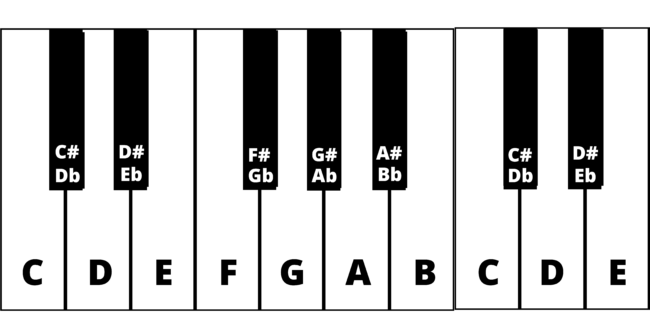Music TheoryWhat is Music Theory?
Music theory is the study of the structure and elements of music, including notes, rhythm, melody, harmony, and chords, helping us understand how music is created and organized. It provides the tools to read, write, and appreciate music on a deeper level.
What is Music Theory?
Music theory is the study of how music works. It's a way of understanding the framework, structure, and rules that make up music. Whether you're listening to your favorite song or learning how to play an instrument, music theory helps explain why certain sounds work well together, how melodies are created, and what makes music feel harmonious or rhythmic.
For students new to music, it can feel like a big leap, but think of music theory as a language. Just as words and grammar help us form sentences, music theory helps musicians create and understand music.
Why Learn Music Theory?
You might wonder, "Why do I need to learn music theory if I just want to enjoy music?" Good question! Learning music theory is like learning the ingredients in a recipe. Once you understand what goes into making a song, you can appreciate music more deeply.
Benefits of Learning Music Theory:
- Understand the building blocks of music, such as notes, chords, and rhythms.
- Read and write music using notation, so you can share music with others.
- Appreciate the complexity and beauty of your favorite songs.
- Communicate with musicians using a shared language, even if you don’t play an instrument.
Example:
Imagine you’re watching a movie, and the music during a sad scene makes you feel emotional. Music theory can help you understand why that music feels sad — maybe it’s because the composer used a minor scale, which typically evokes a more somber mood. Music theory doesn't just make sense of music; it helps you feel it more deeply.
The Building Blocks of Music
Music is built on several core elements. Just like a house needs walls, floors, and a roof, music needs notes, rhythm, melody, harmony, chords, and scales. These components all work together to create a complete piece of music.
1. Notes
Notes are the most basic building blocks of music. Think of them as the "letters" of the musical alphabet. Each note represents a specific sound or pitch. Just like the letters of the alphabet combine to form words, notes combine to form melodies and harmonies.
There are 12 unique notes in music, which include seven natural notes and five sharp or flat notes. Here they are:
- Natural notes: A, B, C, D, E, F, G
- Sharps and flats: C♯ (C sharp), D♯, F♯, G♯, A♯ (sharps raise the pitch by half a step); B♭ (B flat), E♭, etc. (flats lower the pitch by half a step)
Example:
On a piano, the white keys represent natural notes (A, B, C, etc.), and the black keys represent sharps and flats. If you press the C key, you'll hear a specific pitch called C. If you move up to C♯, you'll hear a slightly higher pitch.

2. Rhythm
Rhythm is the heartbeat of music. It's what gives music movement and structure. When you tap your foot along to a song or clap your hands, you're following its rhythm.
Key Components of Rhythm:
- Beat: The steady pulse in music, like your heartbeat. You can feel the beat when you listen to any song with a strong rhythm.
- Tempo: The speed of the beat. Fast tempos are energetic, while slower tempos can feel calm or sad.
- Meter and Time Signature: Music is often divided into measures or bars. The time signature tells you how many beats are in each measure. For example, in 4/4 time, there are four beats per measure.
Example:
Listen to the chorus of your favorite song. You’ll notice the regular beat that keeps repeating, which might be 1-2-3-4. If the song is in 4/4 time, each group of four beats makes up one measure.

3. Melody
A melody is the part of music you can sing or hum. It’s the main tune of a song and is often what sticks in your head after you listen to a piece of music.
Melodies are created by playing notes in a sequence, one after another. Melodies have shape and direction—they might go up in pitch, then down, or stay relatively flat.
Types of Melody:
- Stepwise melody: The notes are close together in pitch, moving up or down by small steps (e.g., "Twinkle, Twinkle, Little Star").
- Leaping melody: The notes jump larger distances, creating a more dramatic effect (e.g., "Somewhere Over the Rainbow").
Example:
Think of the song "Happy Birthday." The tune you sing is the melody. Notice how the notes go up when you sing "Happy Birth-day to you," and how they fall slightly as the song progresses.
4. Harmony
While a melody consists of one note at a time, harmony occurs when multiple notes are played at the same time. Harmony adds depth and richness to music. Often, the melody is sung by a lead vocalist, while harmony is provided by backing vocals or instruments playing chords in the background.
Example:
Imagine a choir where one person sings the melody and others sing different notes that complement it. The result is harmony, creating a fuller sound than if just one person were singing alone.
How Harmony Works:
- Consonant harmony: Notes that sound pleasant together, often used in relaxing or uplifting music.
- Dissonant harmony: Notes that create tension when played together, often used in dramatic or suspenseful music.
5. Chords
A chord is a combination of three or more notes played at the same time. Chords are like the glue that holds music together. They create harmony and give the music structure and mood.
There are many types of chords, but the two most common are:
- Major chords: Sound bright, happy, and uplifting (e.g., C major: C, E, G).
- Minor chords: Sound sad, serious, or even mysterious (e.g., A minor: A, C, E).
Example:
In a typical pop song, the singer might sing the melody, while the guitar player strums chords like G, C, and D in the background. These chords create the harmonic structure that supports the melody.

6. Scales
A scale is a series of notes arranged in a specific order. Scales are important because they form the foundation for melodies and harmonies.
The most commonly used scale in Western music is the major scale. The notes in the major scale are organized in a pattern that sounds "happy" or "bright." In contrast, the minor scale tends to sound more "sad" or "serious."
Example: The C Major Scale
- Notes: C, D, E, F, G, A, B, C This is the easiest scale to play on the piano because it only uses the white keys.
Other important scales include:
- Minor scales: Used in more serious or sad music.
- Pentatonic scales: Often used in rock, blues, and folk music. These scales have only five notes and are very common in popular music.
Music Notation: Reading and Writing Music
To communicate music in a written form, musicians use notation. Music notation is like a language that tells musicians what to play and how to play it. It involves writing down rhythms, pitches, dynamics, and other instructions on a staff.
The Staff
Music is written on a staff, which consists of five lines and four spaces. Each line and space corresponds to a specific note. The position of the note on the staff shows you which note to play, and additional symbols tell you how long to hold the note.

Clefs
The clef at the beginning of the staff indicates the pitch range of the notes. Two common clefs are:
- Treble Clef: For higher-pitched instruments, like the violin or flute.
- Bass Clef: For lower-pitched instruments, like the bass guitar or cello.
If you’ve ever seen sheet music, you’ll notice that the treble clef looks a bit like a fancy "G," and the bass clef looks like a backward "C" with two dots.
How Music Theory is Used
Composing Music
Composers use music theory to create new pieces of music. They use their knowledge of scales, chords, and rhythm to decide how to organize sounds in a way that is pleasing to the ear. Understanding music theory can help a composer decide which chords sound good together, how a melody should develop, and how different instruments can work together.
Example:
In pop music, a typical song might follow a chord progression like C - G - Am - F. This sequence of chords provides a foundation for the melody and gives the song its emotional tone.
Analyzing Music
When you analyze a piece of music, you're breaking it down to see how the different elements (melody, harmony, rhythm, etc.) work together. Even if you're
not composing music, analyzing music can help you appreciate why a song sounds the way it does.
Example:
When you listen to a suspenseful scene in a movie, the music may use dissonant chords (chords that sound tense) to create a feeling of unease. By analyzing the harmony and rhythm, you can understand why the music makes you feel that way.
Conclusion
Music theory might seem complex at first, but it's a powerful tool for understanding the music you love. By learning the basics of notes, chords, rhythms, and melodies, you'll not only appreciate music more but also be able to create or understand it in a deeper way.
This expanded version provides more examples and explanations for each section. Let me know if you'd like to dive even deeper into any particular topic!
